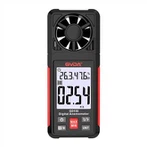The structure and working principle of the analog multimeter
The meter head of the analog multimeter is a DC ammeter, so the measured resistance, voltage and current must be converted into the current that drives the ammeter through the multimeter's internal circuit. The internal structure of the ammeter is as shown in the figure. Its indicating part is a coil wound in a magnetic field connected to the pointer. When current flows through the wire, the coil will rotate.
When current flows through the coil and causes it to rotate, the angle of rotation is proportional to the magnitude of the current. According to the left-hand rule of electromagnetic induction, when a current flows through a conductor located in a magnetic field, the conductor will move under the action of electromagnetic force, and An ammeter is made based on this principle.
1. Internal circuit structure of pointer multimeter:
The pointer multimeter mainly uses a sensitive magnetoelectric DC ammeter as the meter head. When a small current passes through the meter head, there will be a current indication. In addition, the multimeter is also equipped with a shunt (to expand the measurement range of current), a multiplier (to expand the measurement range of voltage), a rectifier (to convert AC into DC), a battery (to provide power for measuring resistance) and Function knobs and other parts.
2. Working principle of analog multimeter
When using an analog multimeter to measure resistance, current, and voltage, the internal circuit structure of the multimeter will change accordingly. The internal circuit status of the analog multimeter when detecting DC voltage is shown in the figure below. It can be seen from the figure that when the multimeter has a measuring range of 100V, the internal resistance of the meter is the sum of the three resistors and the resistance of the meter head, which is about 2MQ, equivalent to 2kO/V. It can be seen that the internal resistance of the multimeter is very high, and general measurements will not affect the measured voltage has an impact. When measuring voltage, the current flowing into the multimeter is very small.
DC voltage measurement status
When detecting AC voltage, as shown in the circuit diagram of the analog multimeter, the AC voltage is applied between the two terminals of the multimeter. There is a bridge rectifier circuit in the meter to convert the AC signal into DC current and then drive the meter.
Measurement status of AC voltage
The internal circuit status of the analog multimeter when detecting resistance is as shown in the figure. When measuring the resistance, you need to use the battery inside the multimeter to feed the current into the resistor. After passing through the resistor, it is sent to the multimeter. If the resistance value is small, the current passing through will be large, and if the resistance value is large, the current passing through will be small. There is also a shunt in the meter. The resistance makes the current flowing through the ammeter proportional to the resistance being measured. The ammeter's pointer deflection angle corresponds to the value of the resistance being measured.






